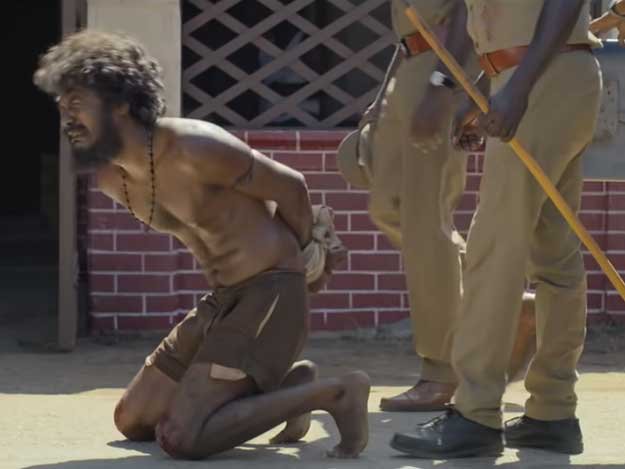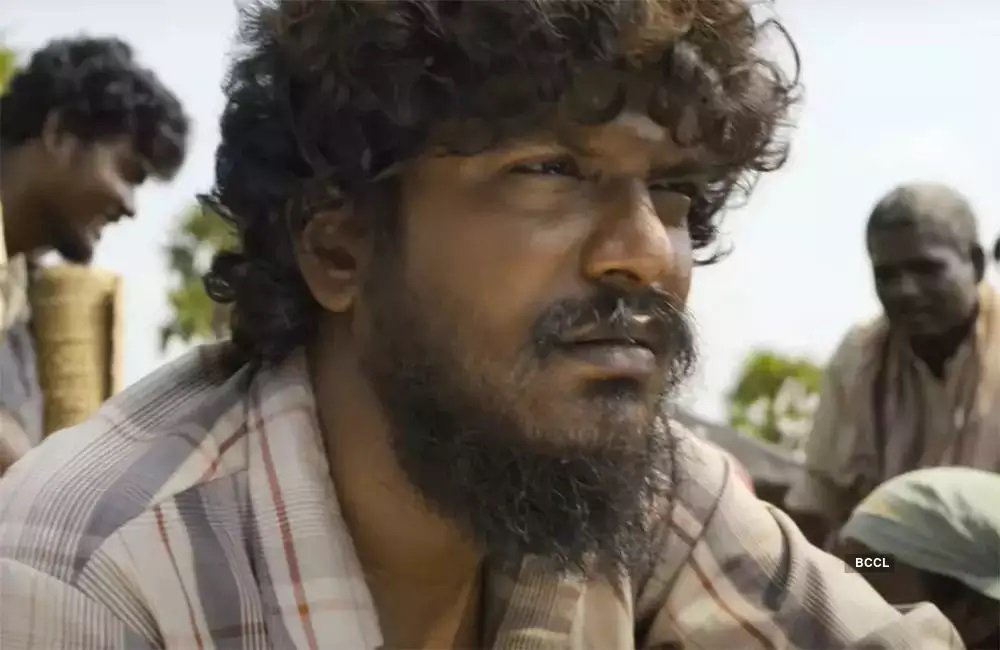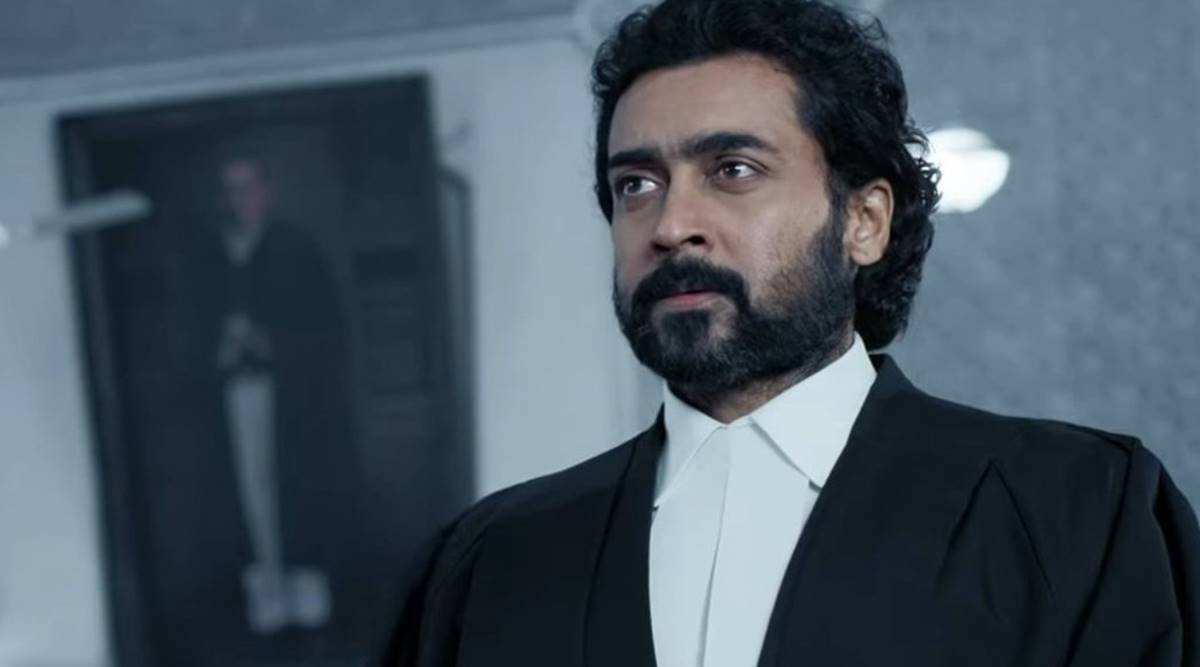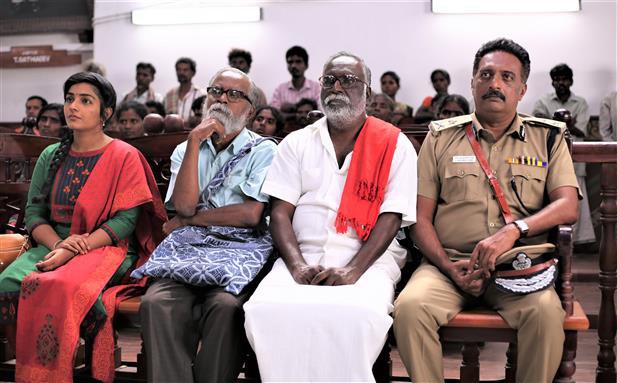If you are unfamiliar with the film Jai Bhim, it’s based on a true story about Parvathi (Sengani in the film), an Irula woman trying to secure justice for the torture and murder of her husband in police custody in a false case of theft.

Jai Bhim had Suriya playing the protagonist, based on the lawyer-turned-judge, K Chandru, Lijomol Jose as Sengani and Manikandan as her husband, Rajakannu.
The film has since inspired a plethora of very interesting conversations, some regular and some unique to the usual discourse around police brutality and the evils of the caste system.

The film aims to provide important commentary on the Indian state that has allowed masses of people to live primitive lives in hopes of one day having a chance of benefitting from the resources generally availed by the 21st century civilisation.
But does it effectively do that? Does it truly provide commentary on the caste system being regressive but a well-oiled machine, a tool of the powerful in the nation-state? Or does it simply appeal to the savarna guilt, invoking only pity for its characters without acknowledging the systemic oppression?
The problem with #JaiBhim is that it evokes, primarily, sympathy and pity and not rage against a system so brutal that it offers no dignity to those it assigns suffering.
— han-nah (@hannecdotess) November 5, 2021
Even if it was written for Savarnas, it should’ve provoked questioning and anger against injustice.
According to Mansi Bhalerao of Feminism In India:
While the movie elaborately portrays the dehumanisation of the tribal communities in India, explicitly shown through horrific visuals, it does not comment on the complicity of the casteist society in the perpetuation of caste violence. Thus, though the identity of the survivors of crime is hyper-visibilised, the perpetrators are ‘casteless’ instruments of the State whose caste identity remains invisible.
The film does in parts, speak of systemic violence against the marginalised, but it does so in extremely gory, sadistic and some might say, unnecessary details, a phenomenon referred to as Trauma or Victim Porn.

The aim of such graphic visuals is simple. It caters to the film’s primary audience, upper-caste Indians and their guilt. Such scenes only garner sympathy for the oppressed, more often than not invoking a reactionary movement of sorts, without ever providing the scope of understanding or even acknowledging the deeper problem at hand.
The portrayal of its subjects’ victimhood in such a manner can be considered as appropriating lived experiences with the only aim being to make upper-caste audiences feel morally obligated in their attempts at ‘allyship’, no matter how hollow they might be in the long run.

The film also follows a well-tested formula when it comes to Indian cinema about social justice in the last decade – a capitalist product specifically designed to draw you in buying tickets to watch a story that will make you feel sorry but never guilty enough to get up and look into a mirror.
Rajesh Rajamani explains this in a series of tweets on this thread:
Except, I wish Gnanavel’s film tried to achieve that by not compromising on the dignity of the very people it is trying to speak for.
— Rajesh Rajamani (@rajamanirajesh) November 2, 2021
And these torture scenes are choreographed in extreme gory detail to possibly shake the conscience of the audience.
— Rajesh Rajamani (@rajamanirajesh) November 2, 2021
The only sensitively told parts of the film are the initial scenes that capture the Irular couple and their affectionate relationship.
Does it start a conversation? Yes, but in the same way, the disaster movie 2012 started a conversation about global warming and the end of the world. The imagery of the inhumane treatment meted out to Rajakannu and the sexual assault to the women in custody will stay with you just long enough for you to tweet about it.

Jai Bhim also keeps its criminals casteless. It uses subtext to establish caste which is ironic considering how brazen it is in portraying violence against the Irulas.
And while this does highlight police brutality, the film then shifts to a very idealistic and a very problematic portrayal of the Indian judiciary almost as if it has remained untouched by caste and class hierarchy.

In doing so, the film absolves the state machinery of any responsibility reducing it to a reluctant and often naive audience that remains unaware of the atrocities committed in broad daylight.
Furthermore, the film uses Jai Bhim as a slogan and nothing more. It also often dilutes the lines between allyship and saviour complex.
Savarna saviour, Savarna gaze, Tribal misrepresentation, Lighter skinned saviour, Dark skinned victims, Article 15 vibes, Lal Salaam Comrades, Cashing in on “Jai Bhim” term.
— Rekoil Chafe (@RekoilChafe) October 18, 2021
🚩🚩🚩🚩🚩🚩🚩🚩🚩🚩🚩🚩🚩🚩🚩🚩🚩🚩🚩🚩🚩🚩🚩🚩🚩🚩🚩🚩🚩🚩🚩🚩🚩🚩🚩🚩🚩🚩🚩🚩🚩🚩 pic.twitter.com/TVui6IZuoU
#Jaibhimmovie a thread
— disha wadekar (@WadekarDisha) November 11, 2021
‘Born criminals,thieves, Habitual Offenders,Historysheeters’-DNTs experience the haunting presence & systemic violence of these terms.Our exps. make for a good saviour story like d movie Jai Bhim.But not a single discussion on the movie centres our lives
Watching Jai Bhim feels like I’m switching between two channels and watching two movies at the same time. One is a coherent narrative of tragic abuse and injustice, the other is a frivolous, glorified, saviour film. Truly feels like a different set of crew members worked on each.
— Gayatri Sekar (@294by10) December 5, 2021
This is not to question the intentions of TJ Gnanavel but perhaps, we just have to wait for someone from the Irula community to make a film sensitive enough to get it right.

















